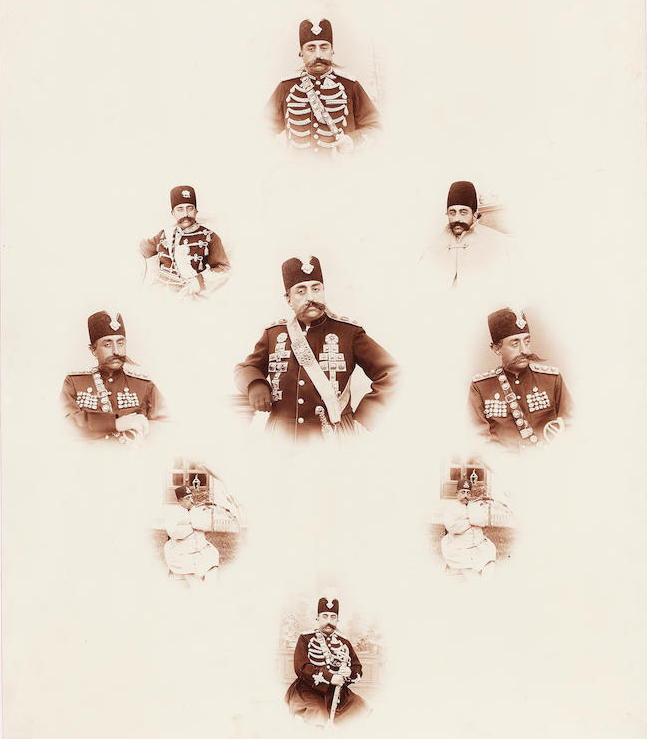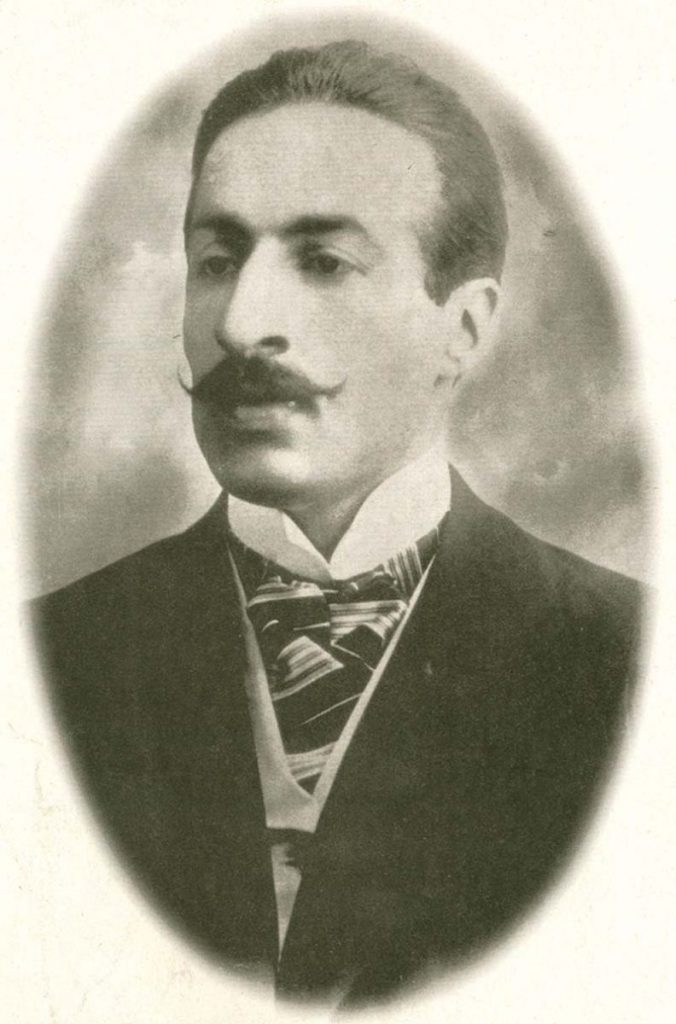The French-Iranian Film Connection ❶

The French-Iranian Film Connection dates back almost as far as the history of cinema itself. In 1900, making profligate use of a loan from the Russian tsar, Mozaffar al-Din Shah, fifth in the line of Qajar monarchs, undertook a months-long pleasure tour of Europe. He was accompanied throughout by his 26-year-old court photographer, Mirza Ebrahim Khan Sani-al Saltanah, known as Akkasbashi (literally, “official photographer”), who had lived for almost a decade in Europe and learned his craft there. In France, the shah saw motion pictures for the first time on July 8 at a private screening in the spa town of Contrexéville, documentary shorts that inspired him to order Akkasbashi—who had already seen motion pictures three years earlier in London—“to purchase all the equipment.”
Arriving in the French capital on July 29, the shah paid multiple visits to the Exposition Universelle—the Paris world’s fair. There, on August 5, he had his first real moviegoing experience, attending an exhibition of the Cinématographe, patented by the Lumière brothers just five years previously, in the vast, 15,000-seat Festival Hall. The shah recorded the momentous event in his diary:
They set up a very large screen in the middle of the hall, turned off all the electric lights, and projected the Cinématographe pictures onto that large screen. . . . Among the pictures were Africans and Arabians traveling with camels in the African desert, which was very interesting. Other pictures were of the Exposition, the passing street, the Seine River and boats crossing the river, people swimming and playing in the water, and many others that were all very interesting.
He reiterated his order to Akkasbashi to acquire the necessary equipment to make films once they were back home. The shah, meanwhile, had already been on film. After his breakfast on August 4, Le Figaro reported that the shah “received a photographer who makes talking cinematography. He posed in front of the lens and spoke into the phonographic apparatus, matching his words and movements.” The first known film of an Iranian was thus, remarkably, a sound film. The Exposition featured not one but three distinct systems that (roughly) synchronized sound and film, and it is unknown whether it was made with Phonorama, Phono-Cinéma-Théâtre, or Théâtroscope.
For his part, Akkasbashi was about to make the first motion picture by an Iranian even before he and the shah returned home. Two weeks later, on August 18, 1900, he used his new equipment to film their visit to a flower festival in Ostend, Belgium. Later that year, he filmed the lions at the Farahabad royal zoo, near where Mozaffar al-Din would construct a palace on Tehran’s eastern edge—perhaps the first moving images ever recorded in Iran.

For several years, motion pictures were shot in Iran exclusively for the entertainment of the shah, his court, and their circle of elites. Akkasbashi made most, perhaps all of them. (According to one of the shah’s great-great-grandsons, Mozaffar al-Din made a few himself—a claim best filed under family myth.) On any given day in one of the many Qajar palaces, films might be shown of such subjects as the shah firing a gun, the shah peering through a telescope, and the shah entering many, many carriages. There were also staged burlesques among his cherished court jesters and newsreels imported from France and Russia. Most of the locally produced films were no more than half a minute long and consisted of a single shot from a stationary angle.
Akkasbashi brought his camera to the streets as well, to shoot scenes including a Moharram procession, a parade of Cossacks, and the arrival of the train on the country’s sole railway, running from southeast Tehran five and a half miles to a Shia shrine in Rey. He also filmed the sybaritic shah’s Euro-tour reprise in 1902, made possible by yet another tsarist loan ostensibly meant to shore up Iran’s shaky state budget.
Two years later, Tehran’s first public motion picture screening took place behind an antique shop. In December 1904, the capital’s first public movie theater opened on Cheragh Gaz (now Amir Kabir) Street; only men were admitted. It quickly raised the ire of leading conservative cleric Shaikh Fazlollah Nuri—the owner was showing pictures of unveiled women, and ordinary Tehranis who could afford it now had access to a medium that was altogether modern, Western, and fun. Nuri issued a fatwa against the theater, and it was shut down by the shah’s authorities after a few weeks.
For the rest of The French-Iranian Film Connection, click here: 1 [2] [3] [4] [5]